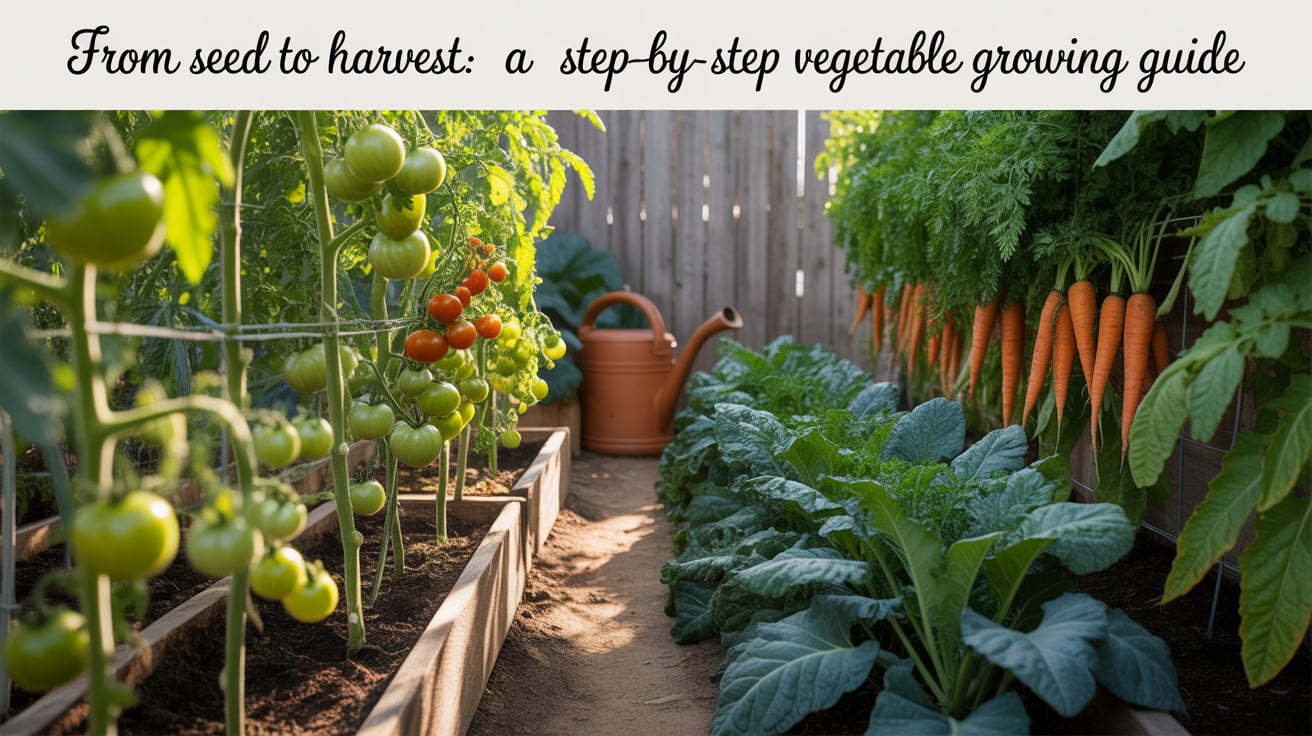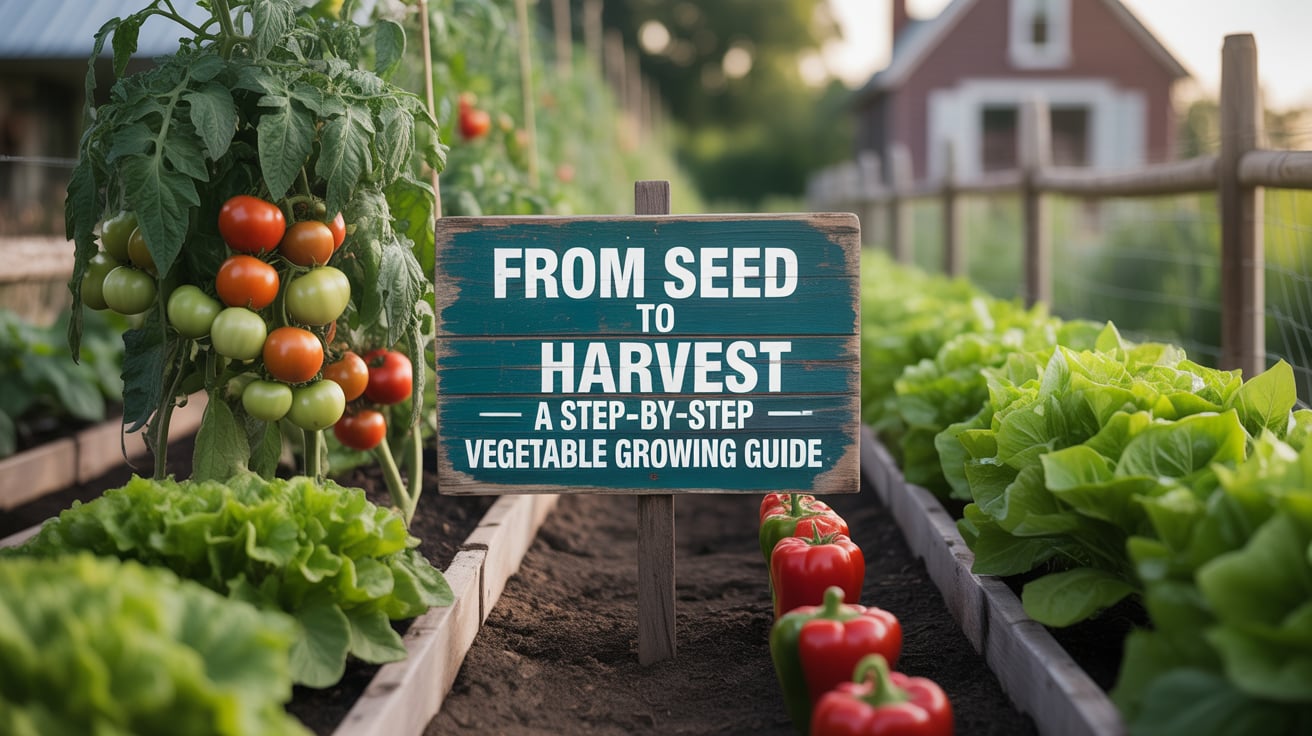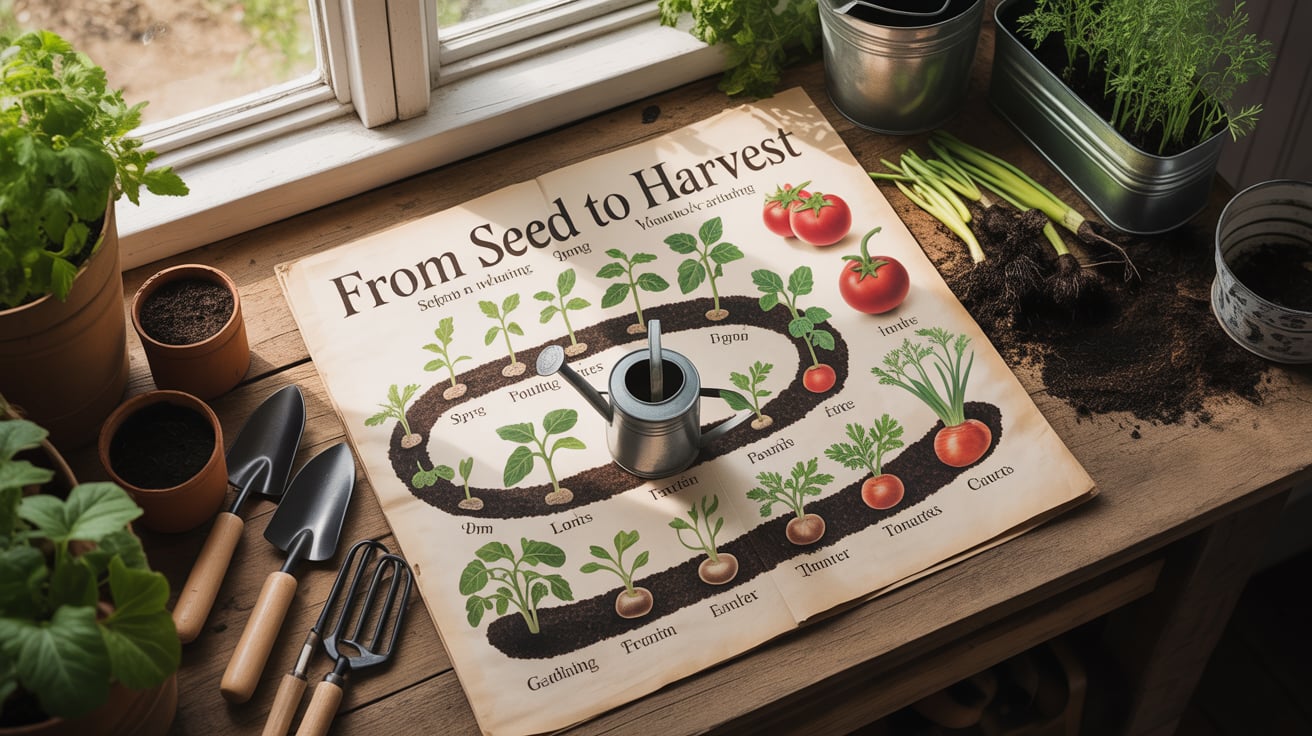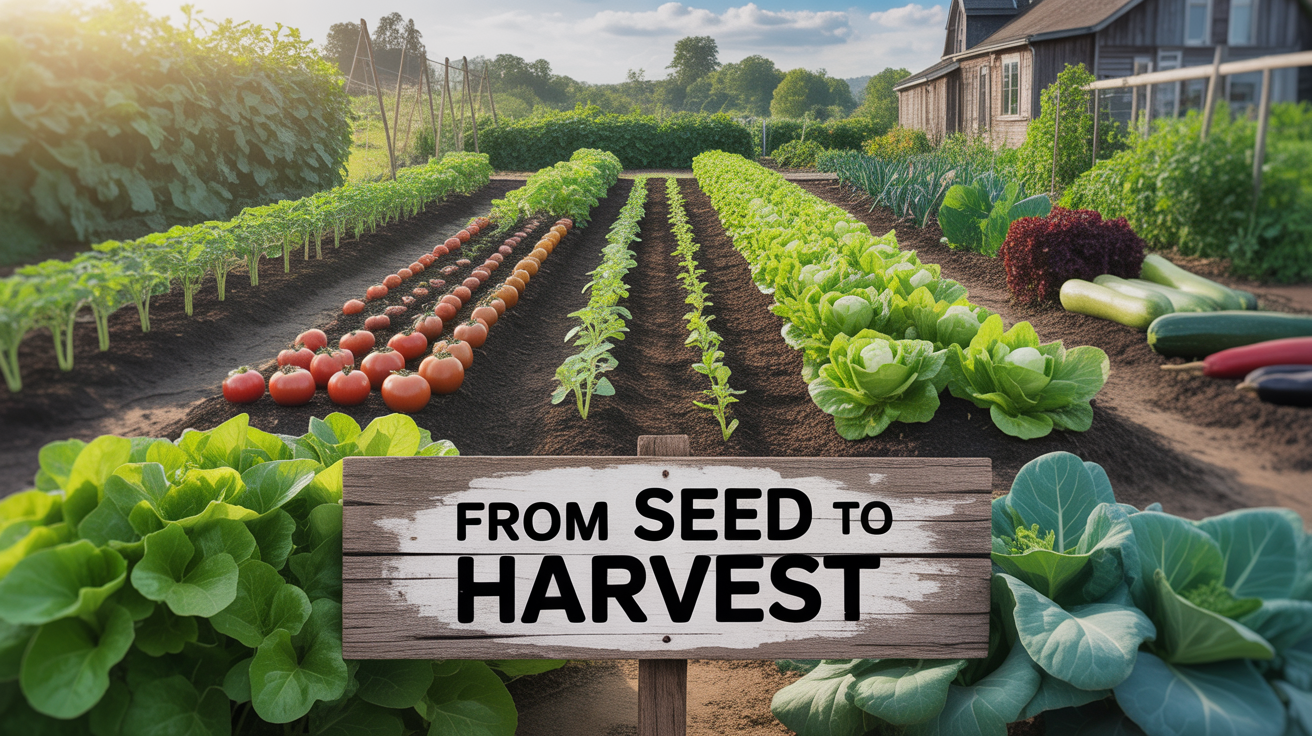From Seed to Harvest: A Step-by-Step Vegetable Growing Guide
Published: 2025-10-18
Introduction: Why Grow Your Own Vegetables?
Growing vegetables at home has become a popular trend. Not only does it reduce grocery bills but it also ensures fresh produce. A home garden offers control over what goes into your food. Raised garden beds and composting methods have made it easier than ever. With the right seeds and plant pots, anyone can start a vegetable garden. This guide will walk you through every step from seed to harvest.
Step 1: Planning Your Vegetable Garden
Before planting begins, planning must be done. The location should receive at least six hours of sunlight daily. Raised garden beds are recommended for better drainage. Compost should be added to enrich the soil. Plant pots can be used for limited spaces. Popular vegetables like tomatoes, carrots and lettuce grow well in most climates.
Step 2: Choosing the Right Seeds
Seed selection plays a vital role. Organic seeds are preferred by many gardeners. High-yield varieties should be chosen for small spaces. Seed packets usually contain planting depth and spacing instructions. For beginners, easy-to-grow vegetables like radishes and spinach are ideal.

Step 3: Preparing the Soil
Soil preparation must be prioritized. Compost should be mixed thoroughly. A pH test can be done to check soil health. Raised garden beds allow better control over soil quality. Mulch can be added to retain moisture. Plant pots should have drainage holes.
Step 4: Planting the Seeds
Seeds should be planted according to packet instructions. Depth and spacing must be followed. Raised garden beds make planting easier. In plant pots, seeds should be placed in the center. Watering must be done gently to avoid displacement.
Watering should be consistent. Overwatering must be avoided. Compost tea can be used as a natural fertilizer. Sprinklers help maintain moisture levels. Fertilizer should be added every two weeks.
Step 6: Managing Pests and Diseases
Pests must be monitored regularly. Neem oil can be sprayed to deter insects. Raised garden beds reduce soil-borne diseases. Companion planting helps protect crops. For example, basil repels aphids when planted near tomatoes.
Step 7: Supporting Plant Growth
Stakes and cages should be used for tall plants. Tomatoes and beans benefit from vertical support. Raised garden beds allow easy installation of supports. Plant pots can be moved to sunnier spots if needed.
Step 8: Harvesting Your Vegetables
Harvesting should be done when vegetables reach maturity. Leafy greens can be picked early. Root vegetables must be pulled gently. Raised garden beds make harvesting easier. Compost can be added post-harvest to prepare for the next cycle.
Step 9: Storing and Using Your Produce
Vegetables should be washed and dried. Refrigeration helps extend shelf life. Composting leftovers reduces waste. Plant pots can be reused for herbs. Raised garden beds can be replanted immediately.

Step 10: Preparing for the Next Season
Soil should be tested again. Compost must be replenished. Seeds should be stored in a cool dry place. Raised garden beds should be cleaned. Plant pots can be stacked and stored.
- Use compost regularly
- Rotate crops each season
- Choose disease-resistant seeds
- Water early in the morning
- Keep a gardening journal
Seasonal Planting Guide for Maximum Yield
Vegetable gardening must be aligned with seasonal cycles. Spring is ideal for leafy greens and root vegetables. Summer supports fruiting crops like tomatoes and peppers. Fall allows for second rounds of carrots and spinach. Raised garden beds help extend growing seasons by warming up faster. Plant pots can be moved indoors during colder months.
Seeds should be selected based on local climate. For example, lettuce thrives in cooler temperatures while cucumbers prefer warmth. Compost must be added before each planting cycle. Soil should be tested for nutrients and pH levels. Organic gardening practices ensure long-term soil health.
Understanding Crop Rotation and Its Benefits
Crop rotation should be practiced to prevent soil depletion. Leafy greens must be followed by fruiting crops. Root vegetables should be rotated with legumes. Raised garden beds make rotation easier due to defined sections. Compost should be added between rotations to restore nutrients.
Diseases and pests are reduced through crop rotation. For example, tomatoes should not be planted in the same spot each year. Nitrogen-fixing plants like beans improve soil fertility. Plant pots can be rotated across different areas to mimic field rotation.
Troubleshooting Common Gardening Problems
Gardening challenges must be addressed quickly. Yellowing leaves may indicate nutrient deficiency. Compost tea can be applied to boost growth. Raised garden beds reduce waterlogging issues. Plant pots should be checked for root binding.
Pests like aphids and caterpillars must be controlled. Neem oil should be sprayed weekly. Fungal infections can be prevented with proper spacing. Organic gardening methods reduce chemical dependency. Mulch should be used to retain moisture and suppress weeds.

Advanced Composting Techniques for Rich Soil
Composting must be done regularly. Kitchen scraps and garden waste should be layered. A balance of green and brown materials is essential. Raised garden beds benefit from direct compost application. Plant pots can be filled with compost-rich soil.
Vermicomposting involves using worms to break down organic matter. This method produces nutrient-rich castings. Compost bins should be aerated weekly. Moisture levels must be maintained. Finished compost should smell earthy and feel crumbly.
Companion Planting for Natural Pest Control
Companion planting should be used to protect crops. Basil repels aphids when planted near tomatoes. Marigolds deter nematodes and beetles. Raised garden beds allow strategic placement of companion plants. Plant pots can be grouped for similar benefits.
Some combinations improve flavor and growth. For example, carrots and onions grow well together. Beans and corn support each other structurally. Compost should be added to all companion zones. Organic gardening thrives with natural pest control.
Vertical Gardening for Small Spaces
Vertical gardening should be considered for limited areas. Trellises and cages support climbing plants. Tomatoes and cucumbers grow well vertically. Raised garden beds can be fitted with vertical frames. Plant pots can be hung or stacked.
This method improves air circulation and reduces disease. Harvesting becomes easier. Compost should be placed at the base of vertical structures. Organic gardening benefits from reduced soil compaction.
| Water Conservation Strategies in Gardening |
|---|
Water conservation must be prioritized. Drip irrigation systems should be installed. Mulch helps retain moisture. Raised garden beds reduce runoff. Plant pots should be watered early in the morning. Rainwater harvesting can be used to collect water. Barrels should be placed near the garden. Compost improves water retention in soil. Organic gardening reduces the need for chemical-based water treatments. |
Building a Garden Schedule and Journal
A garden journal should be maintained. Planting dates and harvest times must be recorded. Raised garden beds can be labeled for crop tracking. Plant pots should be tagged with plant names.
This helps identify patterns and problems. Compost application dates should be noted. Organic gardening requires observation and adjustment. Seasonal planting becomes easier with proper records.
Creating a Kid-Friendly Vegetable Garden
Gardening with children should be encouraged. Raised garden beds can be built at child-friendly heights. Plant pots allow easy access for small hands. Composting teaches sustainability.
Fast-growing vegetables like radishes and peas should be chosen. Watering and harvesting can be turned into fun activities. Organic gardening introduces kids to healthy eating. Safety must be ensured with non-toxic materials.

Expanding Your Garden with Herbs and Fruits
Herbs and fruits should be added to diversify the garden. Basil, mint and parsley grow well in plant pots. Strawberries and blueberries thrive in raised garden beds. Compost must be added for better yield.
These additions enhance flavor and nutrition. Organic gardening supports pollinators like bees. Seasonal planting ensures continuous harvest. Vertical gardening can be used for vining fruits.
FAQs
Tomatoes, carrots and lettuce thrive in raised garden beds.
Compost should be added every 4 to 6 weeks.
Yes, herbs and small vegetables grow well in plant pots.
Early morning is ideal for watering.
Neem oil and companion planting help deter pests.

- Be Respectful
- Stay Relevant
- Stay Positive
- True Feedback
- Encourage Discussion
- Avoid Spamming
- No Fake News
- Don't Copy-Paste
- No Personal Attacks



- Be Respectful
- Stay Relevant
- Stay Positive
- True Feedback
- Encourage Discussion
- Avoid Spamming
- No Fake News
- Don't Copy-Paste
- No Personal Attacks



